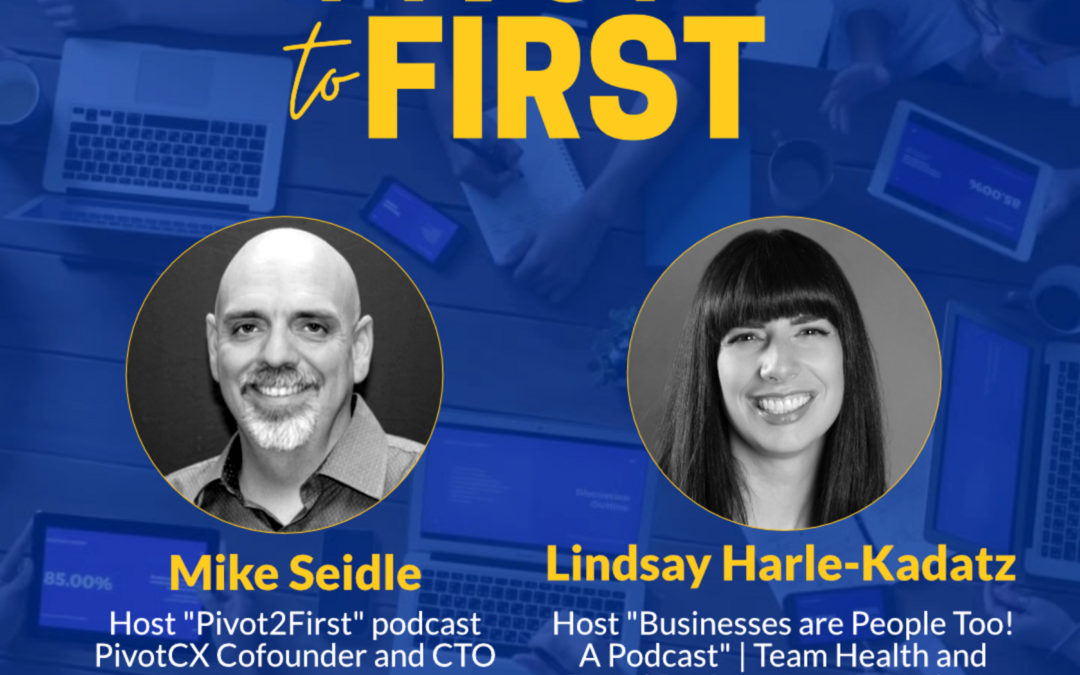
Values Alignment
Today we are joined by Lindsay Harle-Kadatz, the host of “Businesses are people too! A Podcast.” In this episode, we’ll reflect on Values Alignment. We’ll discuss Neuro-change, the challenges people are facing during the pandemic, and why you need to see a business as an actual person.
What is Neurochange?
Why do things change in our brains? Mindsets, beliefs, subconscious, and more are all woven into the framework of neuroplasticity. It helps us understand how our brain changes. Neurochange is the science behind what you need to do and how to get your brain to work with itself.
What are the challenges people are facing during Covid?
People reflected on what values they believed in and if they still rang true for themselves. People know relatively quickly what matters and what doesn’t and can cut through the “crap” much more rapidly. Businesses realize they are not who they used to be.
Working from Home vs. Office?
People want to work from home more. It’s a hard change to navigate to come back to the office. Businesses are wondering how to create a connection between remote workers. One thing to remember about remote workers is people will get their jobs done when you trust them to do it.
See the Business as a person?
Lindsay believes in seeing the business as a person too. It comes from the definition of a corporation as an individual entity. In marketing and branding, mental wellness is also off if a company’s brand is off. Seeing it as a person helps with brand management because you realize there is a reputation and relationship it has with other companies and other people. What many people say about companies isn’t always grounded in reality. Outcoming generations can feel that their identity is tied to the business. In contrast, incoming generations believe that they are the ones who determine the business identity separately from their personal identity.
What parts of the business to see as a person?
First and foremost, ask the people. Ask them how they feel and what they think. Sit down with each team member and ask them what they think: those conversations will tell you where to improve. Remember that you hire people to be better than you at a job. Trust your people.
How do we get trust back?
Fall on your sword. Own up. Hold yourself accountable. Leaders own up to their mistakes. Ask yourself if your ego getting in the way of you and your team achieving something?
How to bring about change when people aren’t in alignment?
This is very situational-based. Always bring in an HR professional or a lawyer. First, ask yourself if you, the leader, are doing the same things you want your employees to do. Also, ask them how they understand the values they need to follow.
Parting thoughts:
Take some time to stop and reflect on whether our daily actions reflect and align with our values. If they do, “cheers!” But if we notice our activities are not aligned with our values, let’s get curious and dig in on how we get there and what our values actually are.
Learn More
Lindsay Harle-Kadatz
Lindsay is passionate about supporting leaders to empower, promote, and champion their people and seeing each team member for the value they bring to their role, well beyond their skillset.
Values Vixen 💛 | Neuro Change Method™, Certified Master Practitioner 🧠 | “Businesses Are People too! A Podcast” Host 🎙
Lindsay’s favorite business books are Necessary Endings (Dr. Henry Cloud) and Traction (Gino Wickman).
Favorite movie: the first Jurassic Park
Lindsay’s LinkedIn: https://www.linkedin.com/in/lindsayharle/
Mike and PivotCX:
Mike’s LinkedIn: https://www.linkedin.com/in/indymike/
Pivot2First Podcast: https://pivot2first.com/
PivotCX: https://pivotcx.io





